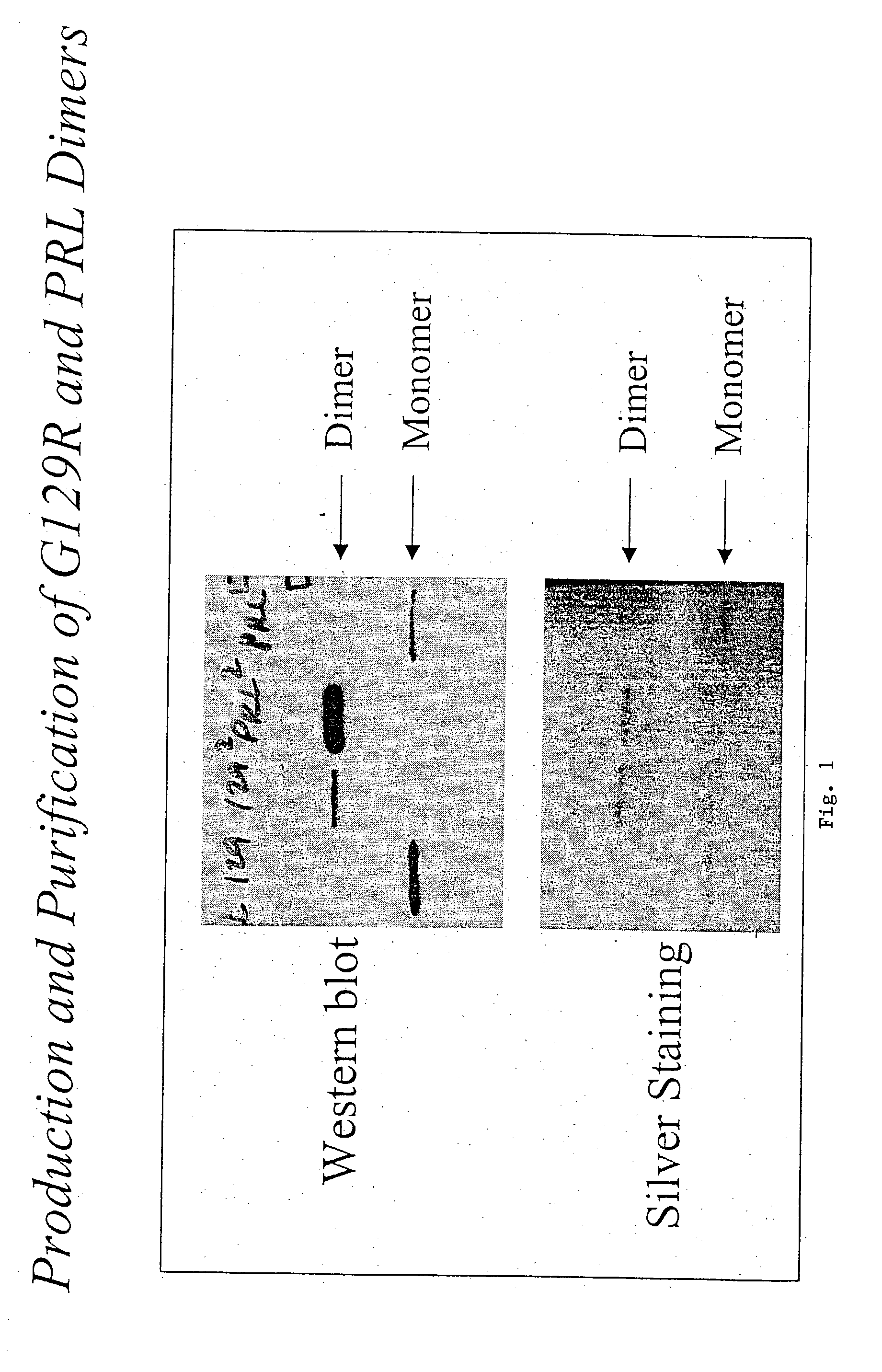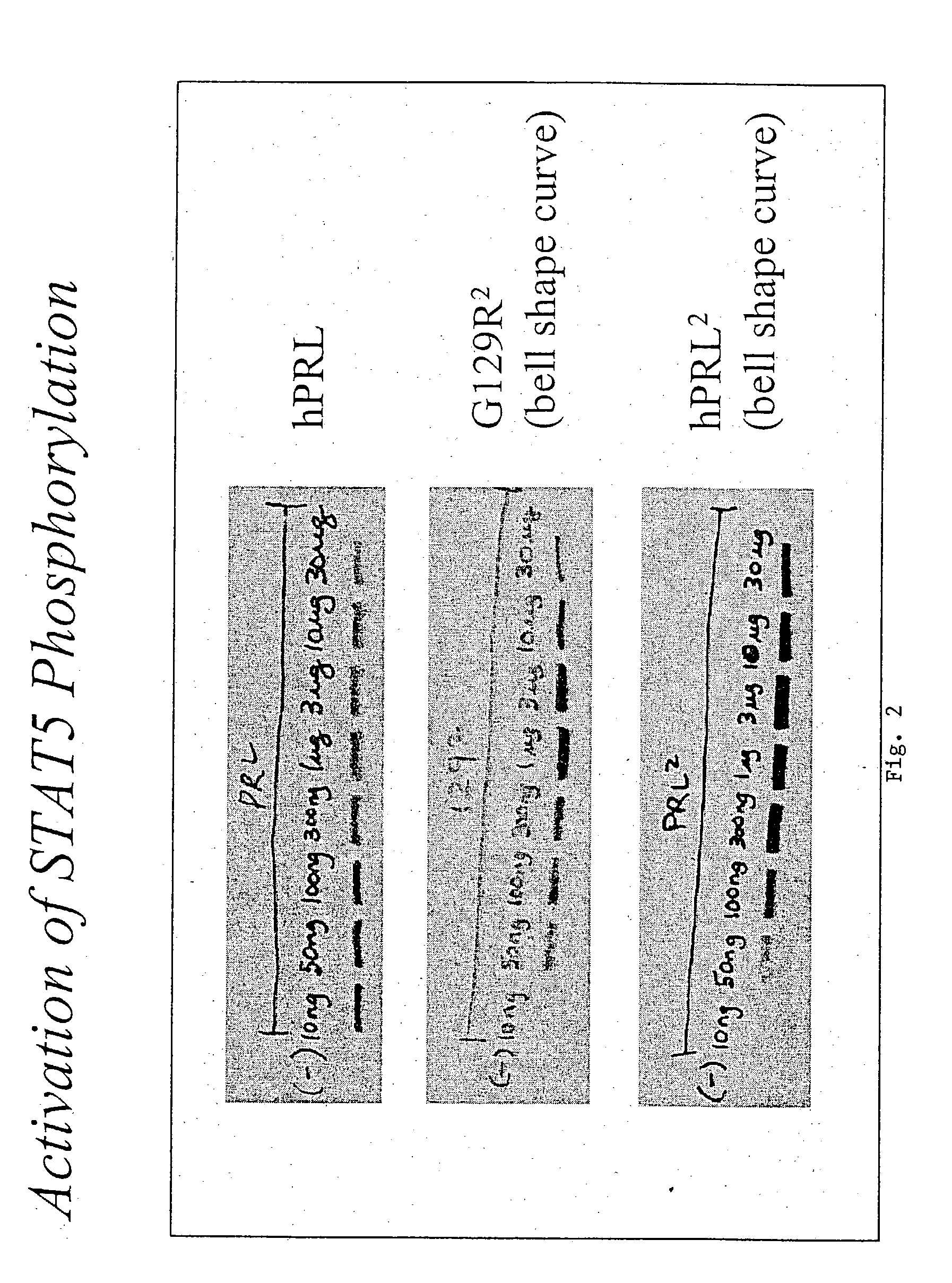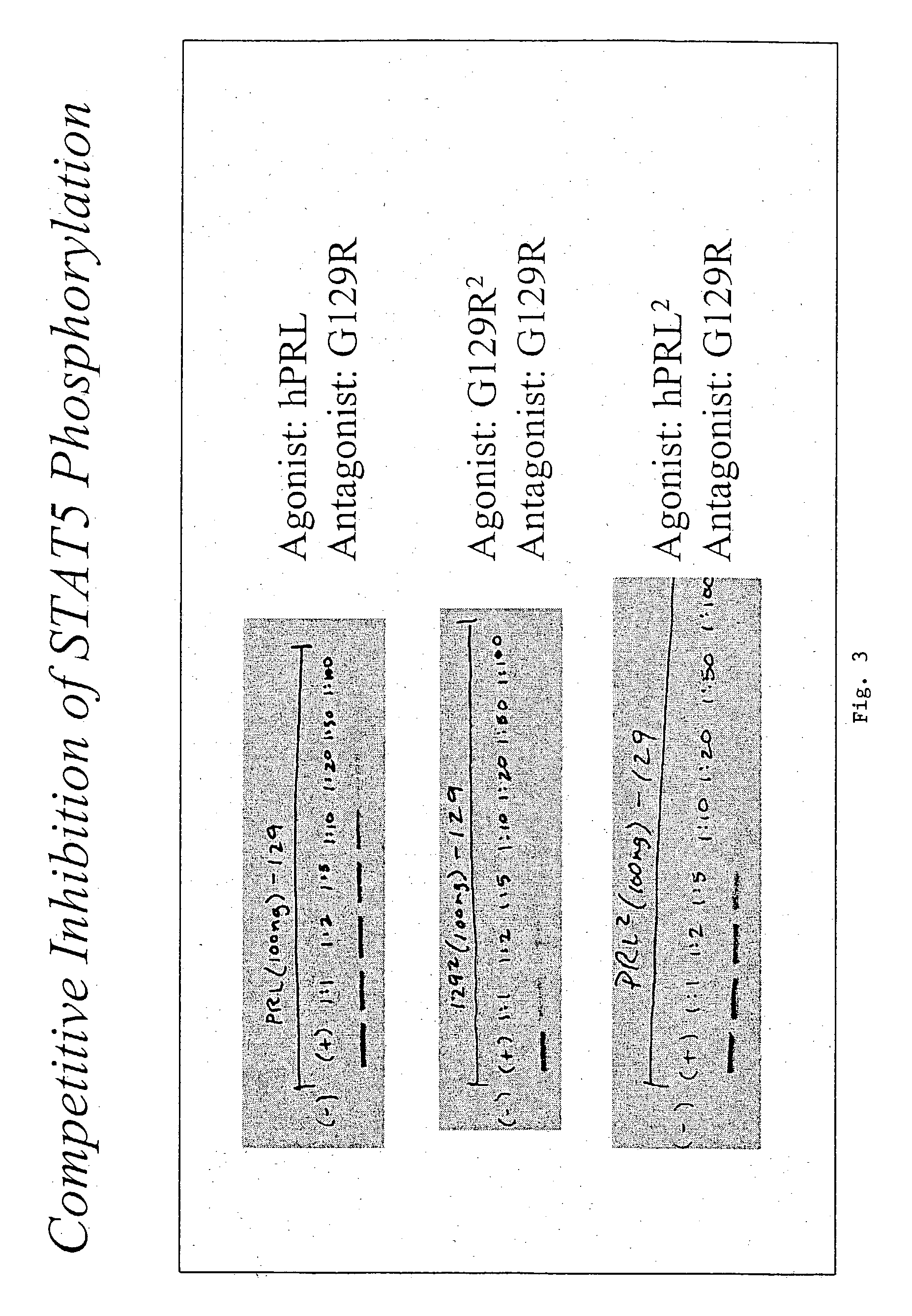Multimeric ligands with enhanced stability
a multimeric ligand and stability technology, applied in the direction of growth hormones, peptide/protein ingredients, drug compositions, etc., can solve the problems of high cost of products, alleviating the risk of disease transmission, and high cost of products
- Summary
- Abstract
- Description
- Claims
- Application Information
AI Technical Summary
Benefits of technology
Problems solved by technology
Method used
Image
Examples
example 1
Cloning and Construction of the Expression Plasmid pET22b-G129R-G129R and pET22b-hPRL-hPRL
[0124] PCR fragments from hPRL-G129R or hPRL cDNA. Monomer A is amplified with primers containing restriction sites NdeI (at 5' end) and BamH1(at 3' end), which contains the translational start ATG to TGC, a codon encodes amino acid Cys at position 199 that is right before the stop codon TAA followed by GGATCC (BamH1). Monomer B is amplified from AAC that encodes the amino acid Asn at position 1 with the addition of GGATCC (BamH1) to stop codon TAA followed by TCTAGA (XbaI). Next, these fragments were digested with respective restriction enzymes and ligated into pET22b an E.coli expression vector, to generate an expression plasmid that has incorporated these fragments (i.e. pET22b-G129R-G129R; or pET22b-hPRL-hPRL). A BamH1 restriction site was added for cloning purposes between two hPRL-G129R or two hPRL cDNAs, which resulted in two extra amino acid residues (Gly and Ser) at the junction of the...
example 2
Production and Purification of hPRL-G129R and wt-hPRL Homodimers
[0125] hPRL-G129R and wt-hPRL homodimers were produced using an E. coli expression vector, pET22b. Briefly, BL21 (DE3) cells (Novagen; Madison, Wis.) were transformed with wt-hPRL homodimer or hPRL-G129R homodimer expression using the calcium chloride method. The transformants were spread on an ampicillin plate, and grown overnight at 37.degree. C. An LB seed culture was inoculated with 6-10 colonies and incubated overnight. The following day, a LB culture was generated by inoculation of 5% of the seed culture and grown for -2.5 hours at 37.degree. C. with agitation. IPTG (Fisher Scientific; Norcross, Ga.) was then added to the culture (1mM final concentration) to induce expression of hPRL or hPRL-G129R and the culture was incubated for an additional 4 hrs. Bacteria were pelleted and resuspended in a solution containing 0.2 M NaPO4 (pH 8.0), 10 mM EDTA, and 0.5% Triton X-100. The resuspended cells were lysed using a 550...
example 3
hPRL-G129R Homodimer Induces STAT 5 Phosphorylation
[0126] T-47D cells are grown in RPMI-1640 medium containing 10% charcoal stripped fetal bovine serum (CSFBS; growth medium). For each experiment, cells are passed into 6 well culture plates in growth medium until they are 90% confluent. On the day of the experiment, cells are placed in serum-free media for 1 hour and incubated with hPRL, wt-hPRL homodimer, or hPRL-G129R homodimer for 30 minutes. After treatment, T-47D cells are washed once with ice cold PBS and collected by gentle scraping in 1 ml ice-cold lysis buffer [20 mM Tris-Cl (pH 7.4), 100 mM NaCl, 2 mM EDTA, 1% NP-40, 1 mM PMSF, 10 ug / ml leupeptin]. The lysis mixture is then passed through a 22 gauge needle several times avoiding air bubbles and spun at maximum speed for 20 minutes. The supernatant is then transferred to a new microcentrifuge tube. 5 ug of STAT 5 monoclonal antibody [UBI, Lake Placid, N.Y.]is then added to 100 ul of cell lysate along with 400 ul of ddH20 an...
PUM
| Property | Measurement | Unit |
|---|---|---|
| Thickness | aaaaa | aaaaa |
| Strength | aaaaa | aaaaa |
| Stability | aaaaa | aaaaa |
Abstract
Description
Claims
Application Information
 Login to View More
Login to View More - R&D
- Intellectual Property
- Life Sciences
- Materials
- Tech Scout
- Unparalleled Data Quality
- Higher Quality Content
- 60% Fewer Hallucinations
Browse by: Latest US Patents, China's latest patents, Technical Efficacy Thesaurus, Application Domain, Technology Topic, Popular Technical Reports.
© 2025 PatSnap. All rights reserved.Legal|Privacy policy|Modern Slavery Act Transparency Statement|Sitemap|About US| Contact US: help@patsnap.com



